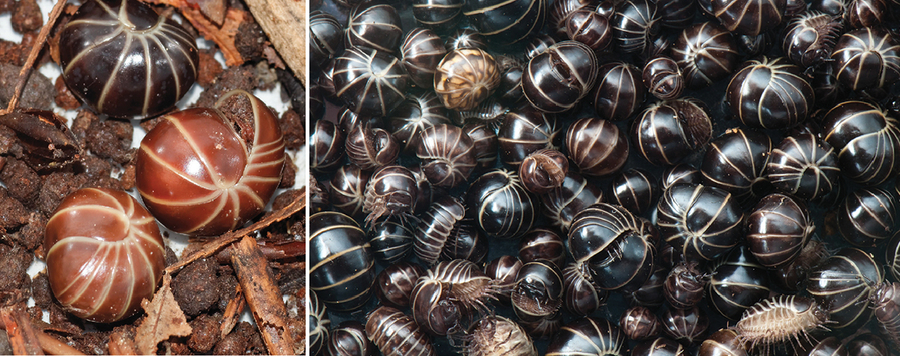
Intraspecific variation and phylogeography of the Black Pill Millipede
The Black Pill Millipede, Glomeris marginata, is the best studied millipede species and a model organism for Diplopoda. Glomeris marginata is widespread, with numerous colour morphs occurring across its range, especially in the south. This study investigates whether colour morphs might represent cryptic species as well as the haplotype diversity and biogeography of G. marginata. The results of the COI barcoding fragment analysis include 97 G. marginata, as well as 21 specimens from seven potentially related species: G. intermedia Latzel, 1884, G. klugii Brandt, 1833 (G. undulata C.L. Koch, 1844), G. connexa Koch, 1847, G. hexasticha Brandt, 1833, G. maerens Attems, 1927, G. annulata Brandt, 1833 and G. apuana Verhoeff, 1911. The majority of the barcoding data was obtained through the German Barcode of Life project (GBOL). Interspecifically, G. marginata is separated from its congeners by a minimum uncorrected genetic distance of 12.9 %, confirming its monophyly. Uncorrected intraspecific distances of G. marginata are comparable to those of other widespread Glomeris species, varying between 0–4.7%, with the largest genetic distances (>2.5 %) found at the Mediterranean coast. 97 sampled specimens of G. marginata yielded 47 different haplotypes, with identical haplotypes occurring at large distances from one another, and different haplotypes being present in populations occurring in close proximity. The highest number of haplotypes was found in the best-sampled area, western Germany. The English haplotype is identical to northern Spain; specimens from southern Spain are closer to French Mediterranean specimens. Analyses (CHAO1) show that approximately 400 different haplotypes can be expected in G. marginata. To cover all haplotypes, it is projected that up to 6,000 specimens would need to be sequenced, highlighting the impossibility of covering the whole genetic diversity in barcoding attempts of immobile soil arthropod species.






